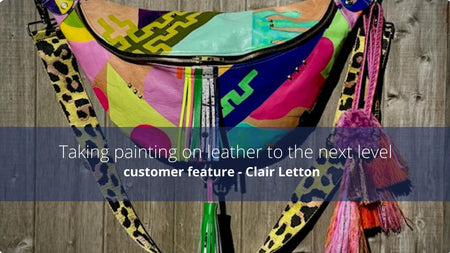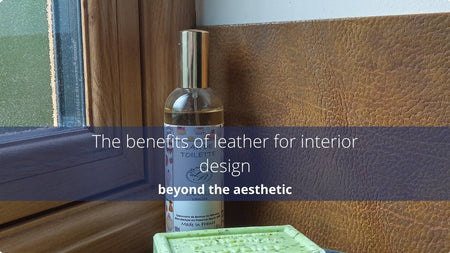Dyeing leather can seem a daunting task, with the added fear of ruining your leather piece and the cost involved. Getting past this opens up a new world of colour and the ability to change leathers to fit your needs making for greater economy of use.
Whatever type of dye or stain you are using here are some universal top 10 tips that will improve your results:
- Store your products correctly – make sure your dyes and stains and your leather are stored at correct temperatures and out of sunlight.
- Wash your hands well before handling your leather to ensure any oils or hand creams do not come into contact with the leather surface, particularly aniline (unfinished) leathers such as natural vegetable tannages.
- Shake the bottle well – many products have a mix within that can separate when bottles are stationery for a while.

- Always tip a little of the product into a dish to use – never use straight from the bottle (the neck of the bottle can collect thicker residue which is then transferred to your project.)

- Never put extra contents back in the bottle – exposure to the air can bring in unwanted bacteria which make the content smell and break down.
- Use a good applicator – applicators will make a difference, and some can leave stroke marks or take up too much or too little of the colour. For best results use a high-density sponge, or the Cut and Use Foam pad.
- Ensure you are working on a good clean surface and watch where the dye lands (especially if you are turning the leather/item over to dye the other side) to avoid unwanted transfer.
- Always keep a damp clean cloth and a dry pieces of kitchen paper to hand.
- Once the dye has dried it is very important to buff the surface before applying a finish. This lifts off any excess dye pigment that hasn’t chemically bonded to the fibres and ensures you won’t get colour run or rub off.

- Do your own testing. Different tannages will take colour differently as the contents react with the fibres. Test out first and collect your results in a notebook, noting the environment conditions of the test as well as the products used.

You can see more details in our YouTube video:
We are sure this is not an exhaustive list if you have any other helpful tips do share them in the comments below!








